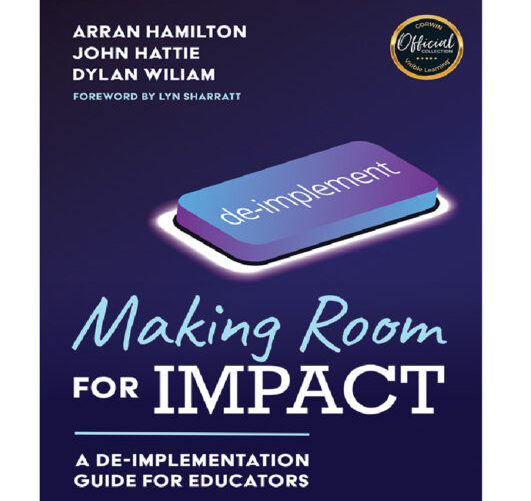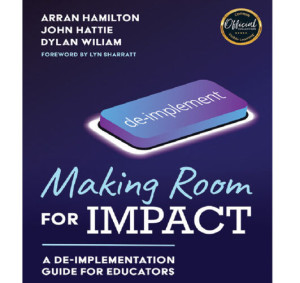

This book is a powerful resource that promises to reshape your thinking and processes in terms of time, money, and effort. The authors highlight a common issue: while we continuously add new practices in hopes of becoming more effective, we seldom revisit, streamline, or remove outdated ones. The result is a longer workweek filled with stress, frustration, and a sense that even if you are getting things done, you’re not doing them well. But here is a systematic instruction manual to increase efficiency in education practice backed by evidence and scaffolded with useful tables, summaries, surveys, and diagrams from experts who have compiled and evaluated reduction philosophies and their implementations across the world.
The book provides a clear rationale for de-implementation, outlining the problems in current systems and the unrealized potential of reducing waste. The initial chapters set the stage with research and international comparisons, giving you and your institution a strong foundation to begin the practice. Its powerful simplicity and clear message guide readers through evaluating and individualizing processes for their unique contexts, akin to a “getting things done” approach for education. The main ideas are encapsulated in the four Rs of de-implementation:
- Remove: Eliminate useless or less useful practices.
- Reduce: Decrease the overuse of certain practices.
- Re-engineer: Simplify non-essential practices by reducing complexities, steps, or time.
- Replace: Swap out practices with more efficient and effective ones.
But how do you do this? The means are made clear through a four-step process to streamline your practices while still considering your unique context and current practices.
First, you’ll Discover your current practices, evaluating their effectiveness and understanding what is needed. Then armed with this information, you Decide which of the four Rs to apply. The book guides you through sorting and sifting your existing practices, evaluating their original goals, and determining if they still meet those goals. Detailed guidelines and over 80 potential methods are provided to assist you in this process, allowing you to choose approaches that best fit your context. Next, you’ll envision what the final product will look like and identify pathways to achieve it. The third step is to De-implement, where you bring your plans to life, monitor progress, and prepare for potential setbacks by deploying countermeasures. Finally, you Re-decide, evaluating the success of your de-implementation efforts and making necessary adjustments, emphasizing ongoing evaluation and adjustments to ensure sustainability and expansion.
Numerous case studies throughout the book illustrate these practices in action, making the concepts easier to understand and apply. The figures and tables are instructive and easy to read helping you visualize the process, building a deep understanding of both the philosophy and the practice. A number of these charts and chapters will be reread by you over the years as you internalize the philosophy and hone your practice. The appendices should not be neglected, they are invaluable, offering a “Shopping List” of over 80 de-implementation opportunities, an overview of 50+ cross-disciplinary research studies supporting de-implementation practices, insights into lean and six-sigma approaches, and 50+ tried and true methodologies for implementation from various fields.
The authors also recognize the real school situation—the institutionalization of inefficient and ineffective processes and the political implications of challenging existing views. They respect the psychological challenge of changing personal habits and guide you through both the personal and professional process of de-implementation.
By implementing these practices, you can save time, reduce workload, and improve your work-life balance. Even if learning outcomes remain stable (although they will likely improve), you’ll have more space to evaluate and update practices over time. Ultimately, these strategies are designed to make your day more effective, reduce stress, increase productivity and focus, and allow for necessary adjustments, with the overarching message that less can indeed be more. Not only are these authors giving you back valuable teaching time, but giving you back hours of lost personal time for yourself and your family.




